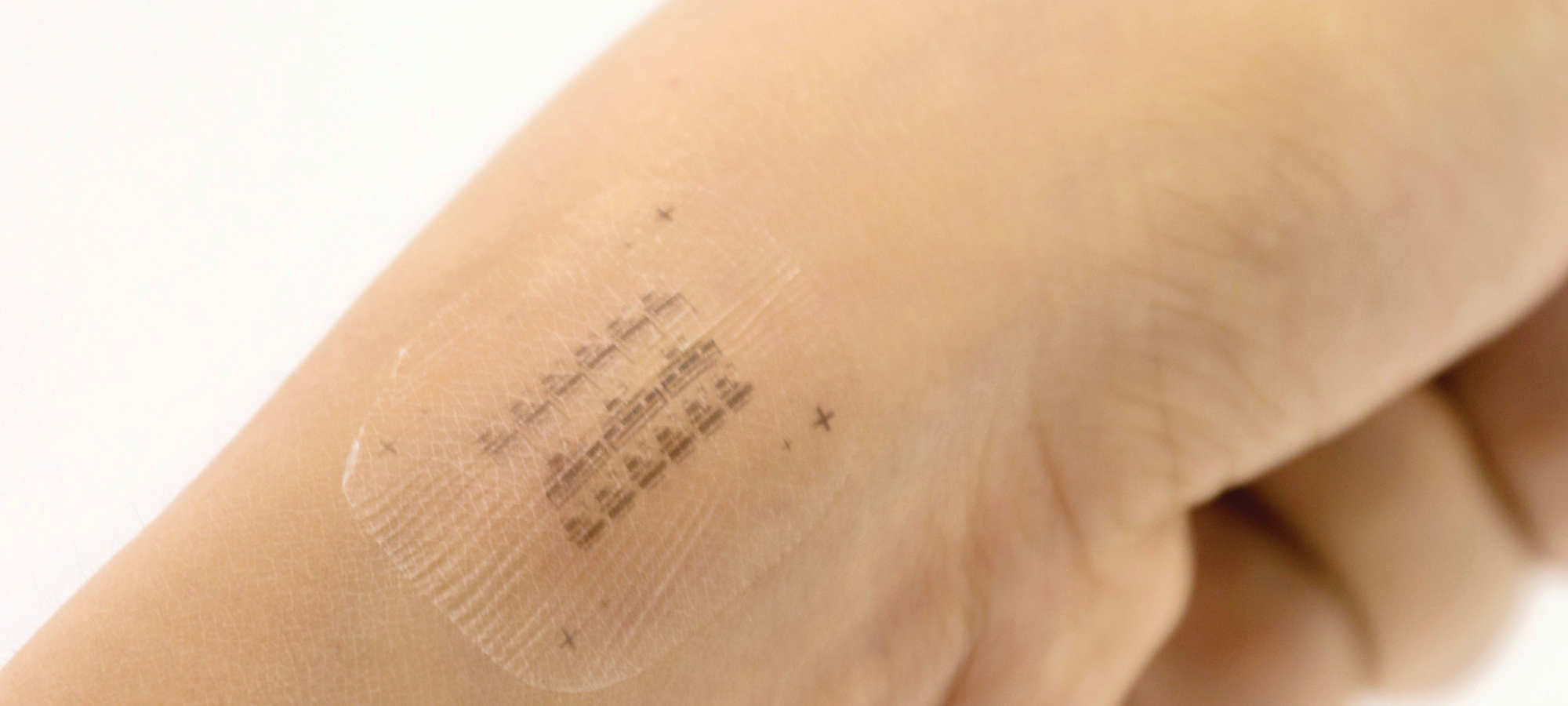
(Photo courtesy Sihong Wang)
A scientistʼs wearable device allows doctors and patients to diagnose and monitor the motor neuron disease.
To know whether a drug effectively treats a disease, you need a way to measure its effects. That challenge has long frustrated efforts to combat amyotrophic lateral sclerosis (ALS), also known as Lou Gehrig’s disease. In its early stages, the motor neuron disease is tricky to diagnose. In 2016 a UChicago team, including neurologists Naoum Issa and Kourosh Rezania, identified an important ALS hallmark: reduced intermuscular coherence, the difference in how two muscles respond when stimulated by a shared nerve. Now molecular engineer Sihong Wang has taken that finding and created a skin-like tool with highly sensitive electronic circuits. Wang’s wearable device, shown above, measures electrical activity in the muscles in real time, giving doctors and patients data they can use to diagnose and monitor ALS. The researchers were able to create prototypes of the tool with the help of Argonne National Laboratory. Wang is continuing to investigate new ways to aid ALS sufferers, including collaborating with neurologist Nicholas Hatsopoulos on a skin-like exoskeleton that could help patients maintain effective motor control.
